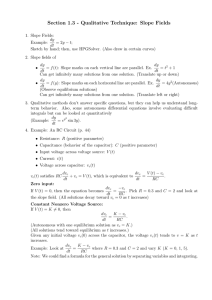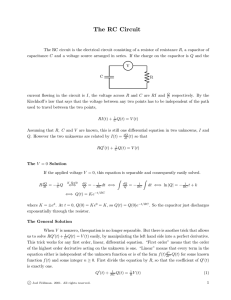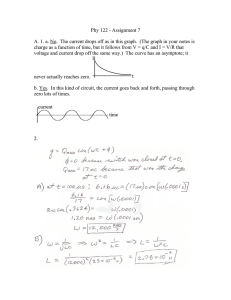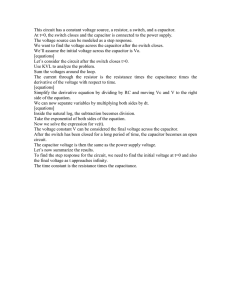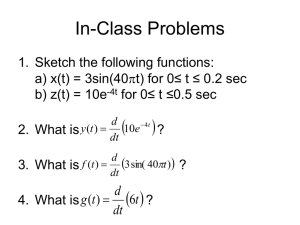Example 7.
advertisement
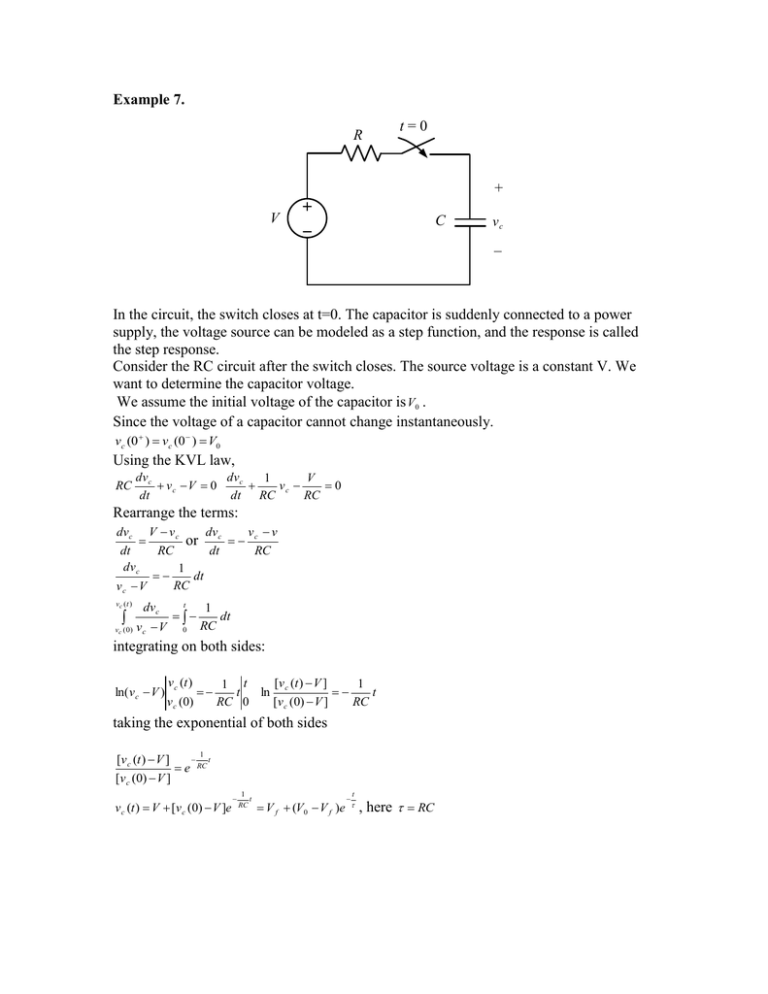
Example 7. R t=0 + V C vc _ In the circuit, the switch closes at t=0. The capacitor is suddenly connected to a power supply, the voltage source can be modeled as a step function, and the response is called the step response. Consider the RC circuit after the switch closes. The source voltage is a constant V. We want to determine the capacitor voltage. We assume the initial voltage of the capacitor is V0 . Since the voltage of a capacitor cannot change instantaneously. vc (0 ) vc (0 ) V0 Using the KVL law, RC dvc dvc 1 V vc V 0 vc 0 dt dt RC RC Rearrange the terms: dvc V v c dv v v or c c dt RC dt RC dv c 1 dt RC vc V vc ( t ) dvc vc ( 0 ) v c V t 0 1 dt RC integrating on both sides: ln(v c V ) v c (t ) [v (t ) V ] 1 1 t ln c t t v c (0) [v c (0) V ] RC RC 0 taking the exponential of both sides t [v c (t ) V ] e RC [v c (0) V ] 1 v c (t ) V [v c (0) V ]e 1 t RC V f (V0 V f )e t , here RC Key steps to calculate the step response of a first order circuit: 1. Find the initial voltage V0 vc (0 ) at t 0 and the final voltage V f vc () as t 2. Find the time constant RC 3. vc (t ) V f (V0 V f )e t

